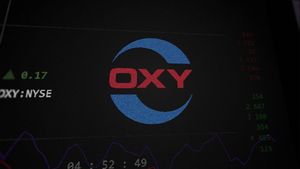
OpenAI recently concluded a monumental secondary share sale in early October 2025, catapulting its valuation to an unprecedented $500 billion, solidifying its status as the world's most valuable privately held company. This remarkable leap from its previous $300 billion valuation earlier in the year underscores the explosive growth and fervent investor confidence in the generative AI sector. The transaction not only provides significant liquidity to employees but also sends a clear signal of intense competition and capital reallocation within the burgeoning artificial intelligence market.
A New Benchmark in the AI Gold Rush
The share sale, finalized on October 2, 2025, saw current and former OpenAI employees offload approximately $6.6 billion worth of their shares through a tender offer. This significant liquidity event was orchestrated by a consortium of prominent investors, including Thrive Capital, SoftBank (TYO: 9984), Dragoneer Investment Group, Abu Dhabi's MGX, and T. Rowe Price (NASDAQ: TROW). While OpenAI had authorized the sale of over $10 billion worth of stock on the secondary market, the fact that only about two-thirds of that amount was ultimately sold is reportedly viewed internally as a strong vote of confidence in OpenAI's long-term prospects, with many employees opting to retain their equity despite the opportunity to cash out at a record valuation.
This tender offer marks the second major one for OpenAI within a year, following a $1.5 billion sale led by SoftBank in November 2024. Such secondary sales are a critical strategy for rapidly growing private companies, providing essential liquidity to employees and serving as a powerful tool to retain top talent and reward long-term contributors, all while alleviating pressure for an immediate initial public offering.
OpenAI's $500 billion valuation now positions it ahead of other highly valued private companies, including Elon Musk's SpaceX, which was last valued at approximately $456 billion or $400 billion by different reports. This valuation reflects not only investor excitement but also the company's robust financial performance. OpenAI reported generating around $4.3 billion in revenue during the first half of 2025, representing a 16% increase over its entire revenue for 2024. The company projects an estimated $10 billion in revenue for the full year 2025, with a substantial portion expected to come from enterprise clients and government contracts rather than individual consumer subscriptions, signaling a strategic pivot towards a more stable, enterprise-focused business model.
Shifting Tides: Winners, Losers, and Market Realignments
The colossal valuation of OpenAI and its strategic pivot have profound implications for various players within the AI ecosystem. Companies deeply integrated with OpenAI's technology, particularly those in cloud computing and AI infrastructure, stand to benefit significantly. Microsoft (NASDAQ: MSFT), a major investor and partner, is a clear winner, as OpenAI's success validates its massive investment and strengthens its position in the generative AI race. Microsoft's Azure cloud services are critical to OpenAI's operations, and increased demand for OpenAI's models directly translates to higher usage and revenue for Azure. Similarly, companies like Nvidia (NASDAQ: NVDA), the dominant supplier of AI chips, will see continued robust demand for their hardware as OpenAI and its competitors scale up their operations and develop more sophisticated models. Infrastructure providers like CoreWeave, which recently secured a significant investment from Nvidia, are also poised for growth as the need for specialized AI computing infrastructure skyrockets.
On the other hand, smaller AI startups or those relying on older AI paradigms might face increased pressure. The concentration of capital and talent around behemoths like OpenAI makes it harder for nascent companies to compete for resources and market share. While the overall AI market is expanding, the competitive landscape is intensifying, potentially leading to consolidation where smaller players are either acquired or struggle to survive. Companies heavily invested in developing their own foundational models, such as Google (NASDAQ: GOOGL) with Gemini and Meta Platforms (NASDAQ: META) with Llama, are in a fierce race to catch up or maintain parity, requiring immense R&D expenditure and strategic partnerships to remain competitive. Their success or failure in this arms race will be heavily influenced by the benchmarks set by OpenAI's rapid advancements and market traction.
The focus on enterprise clients and sovereign AI deals by OpenAI also means that traditional software companies that have yet to fully integrate AI into their offerings could find themselves at a disadvantage. As enterprises increasingly seek AI-powered solutions, companies like SAP (NYSE: SAP) and Oracle (NYSE: ORCL), which are already partnering with OpenAI, are better positioned to integrate and offer advanced AI capabilities to their vast client bases. Those lagging in AI adoption risk losing market share to more agile, AI-first competitors or to established players leveraging generative AI. This dynamic encourages a rapid acceleration of AI integration across all industries, compelling virtually every public company to assess and adapt its AI strategy to remain relevant.
Broader Implications and Industry Transformation
OpenAI's staggering valuation and strategic maneuvers fit into several broader industry trends, most notably the accelerating "AI Gold Rush" and the ongoing shift from consumer-centric hype to enterprise-grade AI solutions. This event further solidifies the notion that AI is not just a technological advancement but a fundamental transformation of economic and industrial landscapes. The ripple effects on competitors and partners are significant; it pushes other tech giants to double down on their AI investments, fostering an intense innovation race that benefits the entire ecosystem through rapid technological progress. Companies like Databricks, a key partner for OpenAI in data and AI workloads, are seeing their strategic importance amplified as the demand for integrated AI platforms grows.
Regulatory and policy implications are also coming to the forefront. The immense power and influence concentrated in a few AI firms, exemplified by OpenAI's valuation, raise critical questions about market dominance, ethical AI development, data privacy, and potential misuse of advanced AI. Governments worldwide are grappling with how to regulate this rapidly evolving technology without stifling innovation. We can expect increased scrutiny from antitrust bodies and calls for more comprehensive AI governance frameworks to ensure fair competition and responsible development. Historically, such rapid technological shifts and market consolidations have often led to regulatory interventions, and AI is unlikely to be an exception. Comparisons can be drawn to the early days of the internet and the rise of tech giants, where initial rapid growth eventually led to significant regulatory oversight and antitrust concerns.
Furthermore, OpenAI's ambition to develop its own AI chips and computing infrastructure signals a strategic move towards greater autonomy and reduced reliance on external suppliers. This could reshape the AI hardware landscape, potentially challenging the dominance of existing chip manufacturers in the long term and fostering new competition in specialized AI hardware. This strategic pivot also highlights a broader trend where leading AI companies are seeking to control more of their technology stack, from foundational models to the underlying hardware, to optimize performance, cost, and security.
The Road Ahead: Opportunities and Challenges
Looking ahead, the short-term possibilities for OpenAI involve consolidating its enterprise strategy, expanding its partnerships, and continuing to push the boundaries of generative AI models. The focus will likely be on scaling its enterprise offerings, securing more sovereign AI deals, and leveraging its vast resources to attract and retain top-tier talent in an increasingly competitive market. In the long term, OpenAI's trajectory suggests a future where it could become a foundational utility for countless industries, embedding its AI capabilities into a wide array of products and services globally. This could involve developing more specialized AI agents, advancing multimodal AI, and exploring new applications in scientific discovery and complex problem-solving.
Potential strategic pivots or adaptations required for OpenAI and its competitors include navigating the evolving regulatory landscape, addressing growing concerns about AI safety and ethics, and managing the immense computational costs associated with developing and deploying advanced AI. For the broader market, new opportunities will emerge in areas like AI-powered cybersecurity, personalized education, healthcare diagnostics, and advanced materials science, driven by the increasing accessibility and sophistication of generative AI. However, challenges such as the potential for job displacement, the need for robust data governance, and the risk of a "tech bubble" forming around inflated AI valuations will need careful management.
Potential scenarios and outcomes range from a sustained period of rapid AI innovation and economic growth, where AI becomes a ubiquitous and transformative force, to a more fragmented market where regulatory pressures and ethical considerations lead to a more cautious and controlled development path. The ongoing "AI arms race" will likely continue, with major tech companies vying for leadership, potentially leading to breakthroughs that benefit humanity or raising new societal challenges that require careful navigation.
Navigating the AI Frontier: A Summary
OpenAI's recent share sale and its unprecedented $500 billion valuation are undeniable market-moving events, underscoring the explosive growth and transformative potential of artificial intelligence. Key takeaways from this development include the intense investor confidence in generative AI, the strategic pivot of leading AI firms towards enterprise solutions, and the escalating competition for talent and resources within the AI ecosystem. This event signals a significant reallocation of capital towards AI, setting new benchmarks for valuation and accelerating the pace of innovation across the industry.
Moving forward, the market will likely see continued investment in AI infrastructure, intensified efforts by tech giants to develop their own foundational models and hardware, and increased scrutiny from regulators. Investors should closely watch for developments in AI governance, the emergence of new AI-powered applications across various sectors, and the financial performance of companies heavily invested in AI. The long-term impact of OpenAI's rise will likely be a more AI-integrated global economy, but the journey will be marked by both immense opportunities and complex challenges related to ethics, regulation, and market dynamics. The coming months will be crucial in shaping the trajectory of this AI frontier, and stakeholders across industries must remain agile and adaptive to harness its potential responsibly.
This content is intended for informational purposes only and is not financial advice





